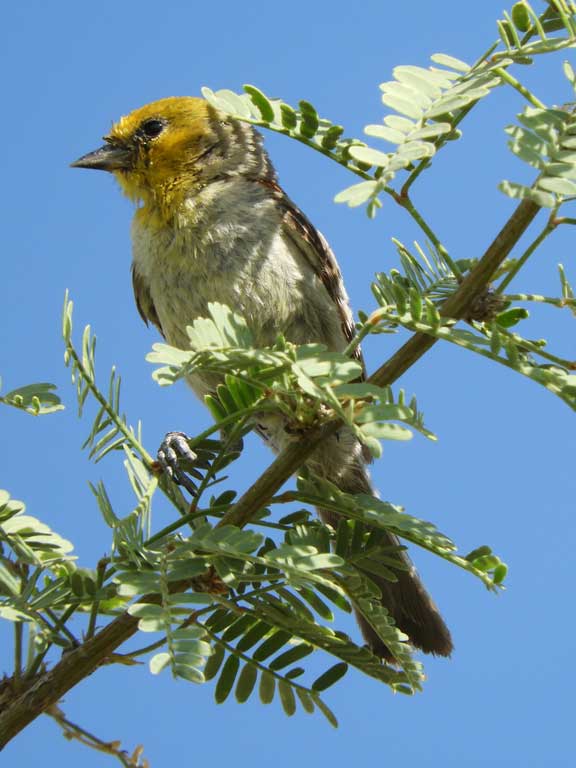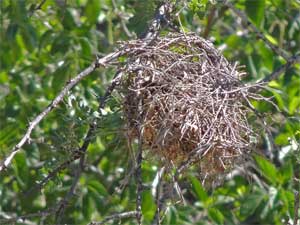Verdin
Auriparus flaviceps

Sears-Kay Ruins site, Carefree, Maricopa, Arizona, USA, 17 July 2019.
These very small birds are among the most common and characteristic species inhabiting the Sonoran Desert. They are even quite common in urban settings where they forage for insects and spiders and also occasionally visit hummingbird feeders. They cannot hover, so instead must perch or grab onto the feeder which they seem to be able to do with extraordinary agility. This ability is the namesake for their family group, Penduline-Tits. When insects are not available they feed on small fruits and flowers. Flowers that they visit include Chuparosa, as seen in the photo at left, and Ocotillo.
The overall color is a pale gray, but notice the splash of yellow on the face and head, also the sturdy, fine-point bill, and the small patch of brick red on the shoulder.
At Proctor Road in Madera Canyon on 7 July 2013 I watched as a verdin plucked the sweet pulp out of a ripe mesquite bean pod and then turn and give a mouthful to its fledgling. The fledgling then took its cue and copied the parent's behavior to extract its own pulp from the bean. This bit of bird watching taught me how resourceful verdins can be, which is important for survival in a harsh environment. Second I learned about the teaching and learning process between adult and offspring.
At my home on March 12th, 2018, near Phoenix three Verdin were excitedly calling to each other from a small Blue Palo Verde. There they each nipped off about 10 newly emerged flower buds before moving on. These little birds are surprisingly loud as they keep in constant contact with each other as they forage for food.
Year-round Resident - No Migration
Sponsored Links:

This nest of a Verdin was seen near Guaymas, Sonora, Mexico. 10 Sept. 2017. Notice how the roof is fine, sun-bleached thatch to reflect sunlight and allow cooling ventilation. It is located out near the end of a slender branch where most predators cannot tread.